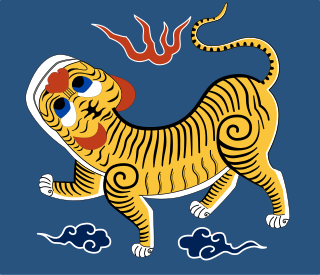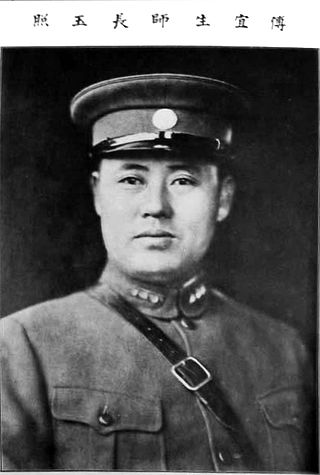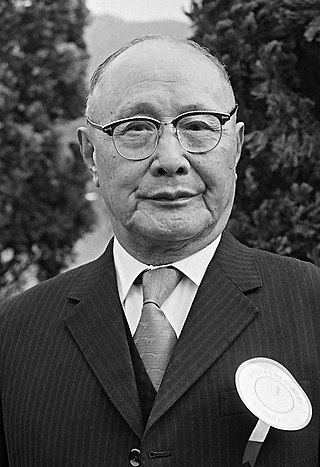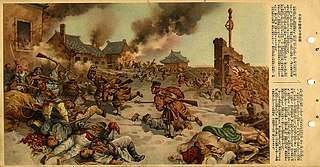This article needs additional citations for verification .(April 2017) |
Suing for peace is an act by a warring party to initiate a peace process.
This article needs additional citations for verification .(April 2017) |
Suing for peace is an act by a warring party to initiate a peace process.
"Suing for", in this older sense of the phrase, means "pleading or petitioning for". Suing for peace is usually initiated by the losing party in an attempt to stave off an unconditional surrender. The nation holding the upper hand may find, in the losing party's offer of making peace, an opportunity for relief from the necessity of having to continue to wage a costly war.
Pressing for peace may sometimes, however, be started by the winning faction as a means to end the war for several reasons, such as if additional conflict would not be in the perceived best interest of the winning party. In that case, demands might be made, or both nations may agree to a "white peace", which is a return to the status quo ante bellum (the prewar situation).
The First Sino-Japanese War (1 August 1894 – 17 April 1895) was fought between the Qing Dynasty of China and the Empire of Japan, primarily over influence of Korea. After more than six months of unbroken successes by Japanese land and naval forces and the loss of the Chinese port of Weihaiwei, the Qing government sued for peace in February 1895. [1]
The archives abound with attempts to halt World War I, but most attempts were unofficial and of no effect. On 2 December 1916, prior to his coronation later that month, Charles I of Austria took over the title of Supreme Commander of the army from Archduke Frederick. In 1917, he secretly entered into peace negotiations with France. He employed his brother-in-law, Prince Sixtus of Bourbon-Parma, an officer in the Belgian Army, as intermediary. The negotiations of the Sixtus Affair for a sued peace failed.[ original research? ]

The Potsdam Declaration, or the Proclamation Defining Terms for Japanese Surrender, was a statement that called for the surrender of all Japanese armed forces during World War II. On July 26, 1945, United States President Harry S. Truman, United Kingdom Prime Minister Winston Churchill, and Chairman of China Chiang Kai-shek issued the document, which outlined the terms of surrender for the Empire of Japan, as agreed upon at the Potsdam Conference. The ultimatum stated that, if Japan did not surrender, it would face "prompt and utter destruction."

The Treaty of Shimonoseki, also known as the Treaty of Maguan in China and Treaty of Bakan in the period before and during World War II in Japan, was an unequal treaty signed at the Shunpanrō hotel, Shimonoseki, Japan on April 17, 1895, between the Empire of Japan and Qing China, ending the First Sino-Japanese War.
Sino-Japanese War most often refers to:

The First Sino-Japanese War or the First China–Japan War was a conflict between the Qing dynasty and Empire of Japan primarily over influence in Korea. After more than six months of unbroken successes by Japanese land and naval forces and the loss of the port of Weihaiwei, the Qing government sued for peace in February 1895.

The Sino-French War, also known as the Tonkin War, was a limited conflict fought from August 1884 to April 1885 between the French Third Republic and Qing China for influence in Vietnam. There was no declaration of war.
The history of the Republic of China began in 1912 with the end of the Qing dynasty, when the Xinhai Revolution and the formation of the Republic of China put an end to 2,000 years of imperial rule. The Republic experienced many trials and tribulations after its founding which included being dominated by elements as disparate as warlord generals and foreign powers.

The Republic of Formosa was a short-lived republic that existed on the island of Taiwan in 1895 between the formal cession of Taiwan by the Qing dynasty of China to the Empire of Japan by the Treaty of Shimonoseki and its being taken over by Japanese troops. The Republic lasted 151 days; it was proclaimed on 23 May 1895 and extinguished on 21 October, when the Republican capital Tainan was taken over by the Japanese. Though sometimes claimed as the first East Asian republic to have been proclaimed, it was predated by the Lanfang Republic in Borneo, established in 1777, as well as by the Republic of Ezo in Japan, established in 1869.

Fu Zuoyi was a Chinese military leader. He began his military career in the service of Yan Xishan, and he was widely praised for his defense of Suiyuan from the Japanese. During the final stages of the Chinese Civil War, Fu surrendered the large and strategic garrison around Beiping to Communist forces. He later served in the government of the People's Republic of China as Minister of the Hydraulic Ministry.
An unconditional surrender is a surrender in which no guarantees, reassurances, or promises are given to the surrendering party. It is often demanded with the threat of complete destruction, extermination or annihilation.

The Beiyang Army, named after the Beiyang region, was a large, Western-style Imperial Chinese Army established by the Qing dynasty government in the late 19th century. It was the centerpiece of a general reconstruction of Qing China's military system. The Beiyang Army played a major role in Chinese politics for at least three decades and arguably right up to 1949. It made the Xinhai Revolution of 1911 possible, and, by dividing into warlord factions known as the Beiyang Clique, ushered in a period of regional division.
This article is concerned with the events that preceded World War II in Asia.

Admiral Ding Ruchang was a Chinese military officer in the late Qing dynasty.
The Tientsin Convention, also known as the Tianjin Convention, was an agreement signed by the Qing Empire of China and the Empire of Japan in Tientsin, China on 18 April 1885. It was also called the "Li-Itō Convention".

He Yingqin also Ho Ying-chin, was a Chinese politician and one of the most senior generals of the Kuomintang (KMT) during Nationalist China, and a close ally of Chiang Kai-shek.

The Battle of Weihaiwei (Japanese: Ikaiei-no-tatakai took place between 20 January and 12 February 1895, during the First Sino-Japanese War in Weihai, Shandong Province, China, between the forces of Japan and Qing China. In early January 1895, the Japanese landed forces in eastern Shandong positioning forces behind the Chinese naval base at Weihaiwei.

The Battle of Yingkou was a land battle of the First Sino-Japanese War between the forces of Meiji Japan and Qing China, fought outside the treaty port town of Yingkou, Manchuria. It is sometimes referred to as the Battle of Niuzhuang or Newchwang.

The Japanese invasion of Taiwan, also known as Yiwei War in Chinese, was a conflict between the Empire of Japan and the armed forces of the short-lived Republic of Formosa following the Qing dynasty's cession of Taiwan to Japan in April 1895 at the end of the First Sino-Japanese War. The Japanese sought to take control of their new possession, while the Republican forces fought to resist Japanese occupation. The Japanese landed near Keelung on the northern coast of Taiwan on 29 May 1895, and in a five-month campaign swept southwards to Tainan. Although their advance was slowed by guerrilla activity, the Japanese defeated the Formosan forces whenever they attempted to make a stand. The Japanese victory at Baguashan on 27 August, the largest battle ever fought on Taiwanese soil, doomed the Formosan resistance to an early defeat. The fall of Tainan on 21 October ended organised resistance to Japanese occupation, and inaugurated five decades of Japanese rule in Taiwan.

The Republic of China (ROC), or simply China, was a sovereign state based on mainland China from 1912 to 1949 prior to the government's relocation to Taiwan, where it continues to be based today. The ROC was established on 1 January 1912 during the Xinhai Revolution against the Qing dynasty, ending the imperial history of China. The Republican government was ruled by the Kuomintang (KMT) as a one-party state based in Nanjing from 1927, until its flight to Taipei on 7 December 1949 following the KMT's de facto defeat by the Chinese Communist Party (CCP) in the Chinese Civil War. The CCP proclaimed the People's Republic of China on 1 October 1949, while the ROC retains control over the "Free Area", with the political status of Taiwan remaining in dispute to this day.

Japan is currently engaged in several territorial disputes with nearby countries, including Russia, South Korea, North Korea, the People's Republic of China, and the Republic of China (Taiwan).

The retreat of the government of Republic of China to Taiwan, also known as the Kuomintang's retreat to Taiwan or the Great Retreat in Taiwan, refers to the exodus of the remnants of the then-internationally-recognized Kuomintang-ruled government of the Republic of China (ROC) to the island of Taiwan (Formosa) on December 7, 1949, after losing the Chinese Civil War in the Chinese mainland. The Kuomintang, its officers, and approximately 2 million ROC troops took part in the retreat, in addition to many civilians and refugees, fleeing the advance of the People's Liberation Army of the Chinese Communist Party (CCP). The CCP, who now effectively controlled most of Mainland China, spent the subsequent years purging any remnant Nationalist agents in western and southern China, solidifying the rule of the newly established People's Republic of China.